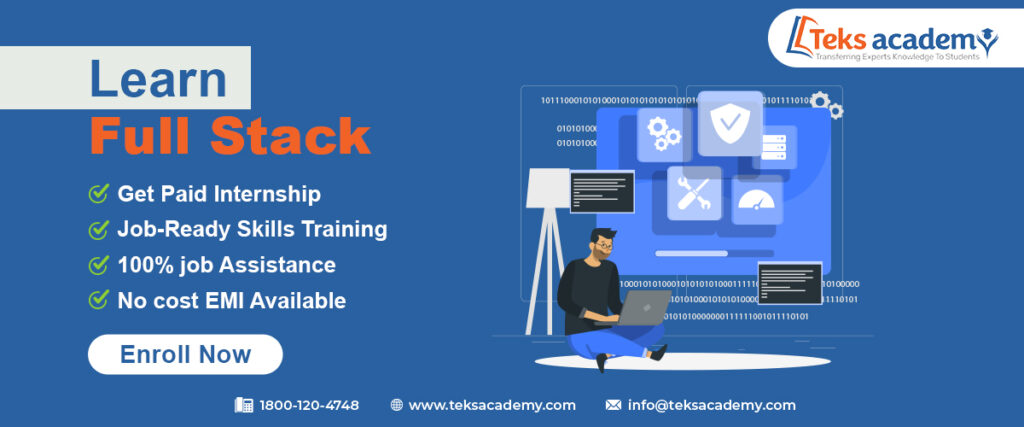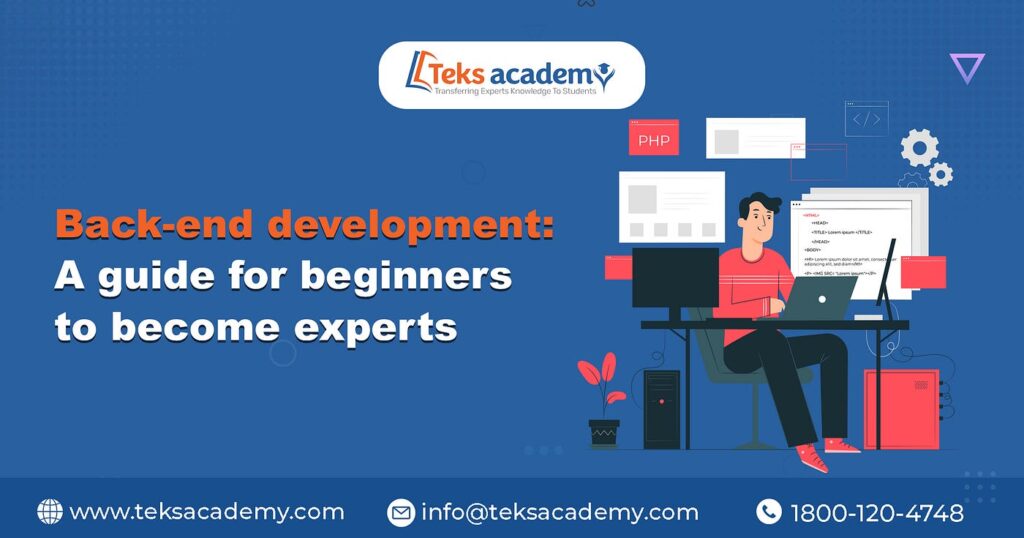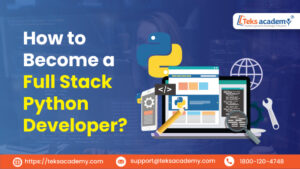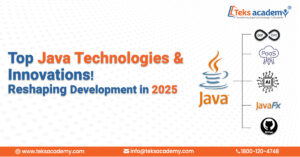A good website should have a quick response, a clear-cut navigation page, better server management, and an attractive web page. Most web developers found it challenging to create a perfect website due to more frameworks, APIs, and libraries available in the full-stack development process.
To become a back-end full-stack engineer expert, this article guides you through some of the skills every back-end developer should know about. By the end, you’ll have a solid understanding of the basics of full-stack back-end development.
What is front-end and back-end full-stack development?
Front-end Development:
The front-end developer focuses on the user side of the website. They ensure that the website users can easily interact with the elements of the web page and navigate through the site with the help of the tools and designs created.
The front-end developer creates menus, layouts, and designs for the website. The front-end developer uses programming languages like JavaScript, HTML, CSS, etc.
Back-end Development:
The backend developer works on the server side of the website. They take care of the functionality, structure of the website, operations, application programming interfaces (API), and databases.
Backend developers have advanced experience in server-side programming languages like Java full-stack and Ruby to build applications.
Different types of backend languages:
Back-end languages are different in file size, speed, flexibility, the number of lines of code needed, and the way they are programmed. Some back-end scripting languages are object-oriented computer languages. This is a style of programming that groups attributes and functions into objects. Other languages may be compiled instead of interpreted, which changes how long it takes to load, how easy it is to understand, and how much processing power is needed to run the program.
The different types of backend programming languages are listed:
C++:
C++ is a low-level programming language used for effective communication with system hardware to improve the application’s performance. It combines features of the C language with object-oriented programming language. C++ is highly used in video games, web applications, and other areas requiring high-level performance.
C#:
It is a general-purpose programming language that creates applications like cloud-based services, mobile applications, websites, and games. C# applications work best with the Windows.NET system, so the best way to use this language is to make apps and programmes that work best on the Microsoft platform.
Java:
Java is a widely used object-oriented programming language. It has a wide range of APIs that helps to develop major applications. A Java full-stack developer has more experience in Mobile app development, desktop GUI development, gaming applications, and cloud based applications.
JavaScript (Node.js):
JavaScript (Node.js) is a widely used programming language by millions of websites today. It is one of the easy-to-learn programming languages.
When Node.js came out, it showed the world that this general-purpose, object-oriented computer language could also be used on the server side of applications, even though it was usually thought of as a front-end scripting language. JavaScript has become a popular choice for front-end and back-end web development because it is one of the web’s core technologies.

Skills required for backend development:
A backend developer creates codes and takes care of triggers on the website. The back-end is highly responsible for the smooth working of any website. The backend developers take care of integrations, APIs, and logic.
Your programming languages skill level defines a successful backend development career. Here is the list of skills to help you become a successful backend developer.
Back-end programming language:
In the field of development, a strong command over languages can be reached with the help of having more knowledge in programming languages.
Knowledge in frontend technology:
Having a basic knowledge about front-end helps in proper communication in every stage of the full-stack development. Good command over basic language is essential to create a perfect application.
Backend framework knowledge:
The framework is one of the most essential parts of a language on a program or application you’re working on. Backend developers frequently used frameworks are.
Django
ExpressJs.
Version control system:
Version controls are responsible for tracking changes from time to time. This is helpful when a coder makes a mistake and wants to reverse it. This helps protect the entire source code from deletion or any other incidents. Some of the widely used version control systems are listed below.
- GitHub
- AWS Code Commit
- GitLab.
Know about databases and APIs:
Storage of data is more crucial while creating an application. A back-end developer should have good command over the database. The back-end developer is responsible for the relational mapping of the data.
Application Programming Interface helps in creating connections between various applications. This cloud system enhances the user experience of a server by offering services such as file storage, database management, and security to other systems connected to the same network. The server’s data is responsible for recovering and reorganizing stored information. Dockers, Kubernetes, etc., are among the finest server management tools.
Back-end developer salary range:
The back-end developer salary ranges from Rs. 2.35 LPA to 16 LPA depending upon the years of experience they hold.
| Experience | Salary Range (Per Annum) |
| <1 yr | 2.35 LPA – 4 LPA |
| 1-4 yrs | 6 LPA to 8 LPA |
| > 4 yrs | 8.5 LPA to 17 LPA |
In Conclusion:
We’ve talked about many different things, from server-side computer languages to designing databases and more. By learning the basics of back-end development, you have a strong foundation on which to take on challenging problems and make web apps that are reliable and scalable.
Remember that you must practice and keep learning to become a master in any field. New frameworks, tools, and best practices will appear as technology changes. Stay interested and take advantage of the chance to learn and adapt. Join the active developer community and look into open-source projects to improve your skills and keep up with the latest trends.







